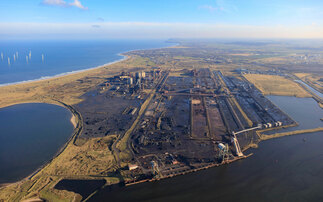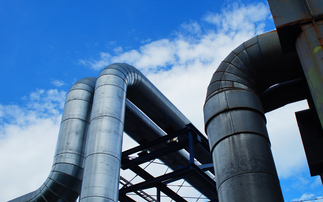
Partner Insight: ESO explains how shifting to a digitised, virtual energy system can help deliver optimal whole system decision making with better outcomes for the environment, the economy and society
The energy industry is undergoing a transformation. Digitalisation has already initiated huge leaps for other industries - now as we look to accelerate decarbonisation, it's the energy system's turn to benefit.
Leaders across the sector, including the Energy Digitalisation Taskforce (EDiT), have called for a digitalised energy system - one that will allow better oversight of the UK's energy needs, to help navigate the growing complexities of the sector. However, an aligned industry approach is needed to turn this vision into a reality and help solve wider system challenges. That's where the Virtual Energy System comes in: to help deliver optimal whole system decision making with better outcomes for the environment, the economy and society.
To do that, the ESO has developed a set of factors - key steps and constituents of a successful digitalised energy system - all to ensure we have a shared vision of success. To ensure this vision becomes a reality, there are 14 socio-technical factors acting as guiding principles for an accelerated build. These factors cover both social and technical development areas and will allow us to accelerate the formation of the Virtual Energy System. They are central in powering a more reliable, effective, and sustainable future for the energy system together.
What will the Virtual Energy System look like?
The Virtual Energy System will be an ecosystem of connected digital twins, spearheaded by the ESO. Put simply, the physical infrastructure of the energy system will be replicated virtually and updated in right-time. Dependent upon every element of the British energy industry, it represents a rallying cry for us all to lend our support, expertise, and investment to facilitate real digitalisation progress.
Everyone in the energy industry, from power generators to end users, can share their data in a secure and resilient way. In return, they will get unprecedented access to the information and insight of the entire industry.
The Virtual Energy System is about everyone involved in the energy system driving innovation and advancing sustainability progress; ultimately supporting the UK's commitment to decarbonising the energy system by 2035.
We simply cannot reach decarbonisation targets without the Virtual Energy System and without full sector collaboration.
What are the Priority Factors?
Among the key factors driving development, six priority factors which are derived from the 14 socio-technical factors will act as guiding principles to ensure that the Virtual Energy System becomes a reality. As well as providing guidance on developing the technical requirements, the priority factors will also help foster a culture for progress driving the development of a digitalised energy system.
The Six Priority Factors are as follows:
- Raising awareness and fostering culture
- Engaging stakeholders
- Governance
- Aligning models and taxonomies
- Increasing visibility and enabling sharing
- Creating an interoperable stack
The first three priority factors highlight the cultural focuses that underpin the project, guiding it towards a system that works for all. Our first - 'Raising awareness and fostering culture' - is founded on the idea that the energy industry needs to adopt a role, unite behind a single vision, and move towards a culture of increasingly transparent data sharing.
To support this, participants across the energy sector need to raise awareness of the benefits of the Virtual Energy System with key stakeholders. To drive growth the system needs to develop strong, actionable use cases demonstrating the system's value. Alongside this, the industry must collectively define a strong governance framework that upholds the values of the industry and support participation by encouraging actors such as policymakers to develop regulations in favour of a unified digital energy system.
The priority factors also ensure the Virtual Energy System has one standardised, technical approach to sharing data and guides participants to meet pre-agreed standards on the rigour and security of shared data. The second three, technical factors, work together to create these conditions.
As such, data owners have a crucial role to play. If we are all going to be able to connect to and reap the benefits of the Virtual Energy System, data must be shareable within it, regardless of each individual system's underlying protocols, to ensure interoperability. A digitalised energy system requires a common language to ensure data can be accessed and used in a streamlined way. Furthermore, all actors must have confidence that their shared-data remains secure within the confines of the Virtual Energy System.
By delivering against the technical requirements of the Virtual Energy System we ensure that all the data fed into the system is providing the maximum value, producing effective right-time information to support actionable insights for all participants. To make this a reality, energy system operators need to act now. We must all ensure we begin preparing data and data processes to engage with the Virtual Energy System as it develops.
What role can you play?
The Virtual Energy System can be a powerful tool for the energy industry, but first it must be built by the industry.
It is about driving transformation and its success must be powered by the people that use it. Increased participation is the only way to accelerate the development of the Virtual Energy System. This means informing your stakeholders of the project's mission and preparing your business and team to standardise and share its data.
The mission has already started.
Learn more about the Virtual Energy System and how you can be a part of it today. Find out more here.
This article is sponsored by ESO.






